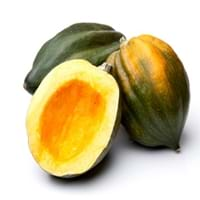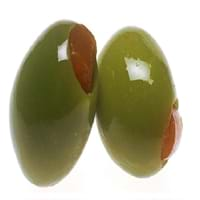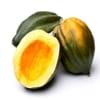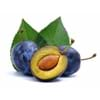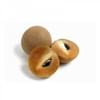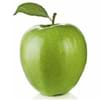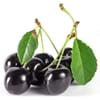Health Benefits
Anti-inflammatory properties, Arthritis treatment, Regulates Blood Sugar
Cancer prevention, Helps in cartilage regeneration, Prevents macular degeneration, Treatment of alzheimer's disease
General Benefits
Boosts immune system, Controls blood sugar levels, Digestive aid
Anti oxidant properties, Anti-inflammatory properties, Boosts immune system, Controls blood pressure, Digestive aid, Maintains healthy cholesterol level
Skin Benefits
Nourishes skin, Protects skin from oxidative stress
Hydrates skin, Skin rejuvenation, Treatment of skin diseases
Hair Benefits
Prevents hair loss, Promotes longer and healthier hair, Regulates hair growth
Acts as moisturizer, Good conditioner, Regulates hair growth
Allergy Symptoms
Asthma, Red rash, Swelling of mouth, tongue or lips
NA
Side Effects
Diarrhoea, Vomiting
Affects blood glucose levels, Dizziness, Stomach pain
Best Time to Eat
Along with meal, As a snack in the late afternoon, Don't eat after meal, Eat the fresh ones, avoid mixing with any other foods, don't eat after meal.
Hardly eaten raw, Olive oil is consumed for many purposes.
Vitamin B5 (Pantothenic Acid)
Vitamin C (Ascorbic Acid)
Vitamin E (Tocopherole)
Not Available
Vitamin K (Phyllochinone)
Not Available
Lutein+Zeaxanthin
Not Available
Calories in Fresh Fruit with Peel
Calories in Fresh Fruit without Peel
Not Available
Not Available
Calories in Frozen Form
Not Available
Season
Winter
Spring, Summer
Varieties
Bush Table Queen, Heirloom Table Queen, Festival Hybrid, Early Acorn Hybrid, Table Ace, Ebony and Cream of the Crop
Manzanillo, Sevillano, Mission, Ascolano, Barouni, Gordal, Rubra and Picholine
Color
Dark green, Green-yellow, Orange green
Black, Green, Purple, Yellow
Inside Color
Yellow
Brown
Origin
Central America, North America, Unknown
Eastern Mediterranean Region
Soil Type
Well-drained
Well-drained
Climatic Conditions
Cold, Sunny
Warm to hot climate
Facts about
- It was named as Acorn Squash for its resemblance to a large ribbed acorn.
- It is said that squash was being grown in Mexico as long as 10,000 years ago.
- It was the first food cultivated by native American Indians.
- In ancient Greece, 1st eye shadow was made by adding olive oil in ground charcoal.
- The most expensive form of olive oil is Extra Virgin.
- Largest type of olive tree is known as donkey tree & smallest one is called bullet.
Other Countries
Egypt, India, Iran, Italy, Mexico, Russia, Turkey, Ukraine, United States of America
Algeria, Egypt, Greece, Italy, Morocco, Portugal, Syria, Tunisia, Turkey
Top Importer
Costa Rica
United States of America
Top Exporter
United States of America
Italy
Botanical Name
Cucurbita Pepo
Olea europaea
Synonym
Winter Squash
Not Available
Subkingdom
Tracheobionta
Tracheobionta
Division
Magnoliophyta
Magnoliophyta
Class
Magnoliopsida
Magnoliopsida
Subclass
Dillenhidae
Rosidae
Order
Cucurbitales
Lamiales
Family
Cucurbitaceae
Oleaceae
Generic Group
Not Available
Olive
Difference Between Acorn squash and Olive
We might think that Acorn squash and Olive are similar with respect to nutritional value and health benefits. But the nutrient content of both fruits is different. Acorn squash and Olive Facts such as their taste, shape, color, and size are also distinct. The difference between Acorn squash and Olive is explained here.
The amount of calories in 100 gm of fresh Acorn squash and Olive with peel is 40.00 kcal and 115.00 kcal and the amount of calories without peel is Not Available and Not Available respectively. Thus, Acorn squash and Olive belong to Low Calorie Fruits and High Calorie Fruits category.These fruits might or might not differ with respect to their scientific classification. The order of Acorn squash and Olive is Cucurbitales and Lamiales respectively. Acorn squash belongs to Cucurbitaceae family and Olive belongs to Oleaceae family. Acorn squash belongs to Cucurbita genus of Pepo species and Olive belongs to Olea genus of O. europaea species. Beings plants, both fruits belong to Plantae Kingdom.
